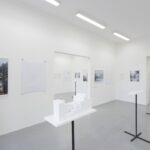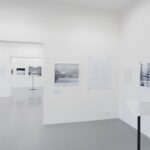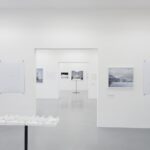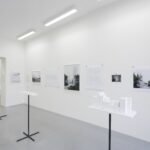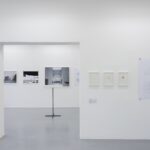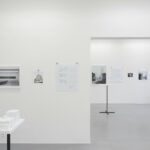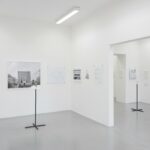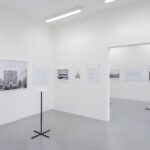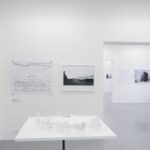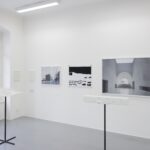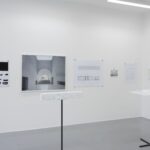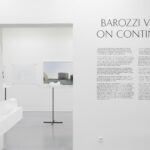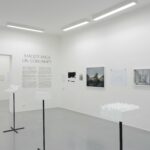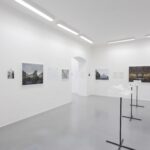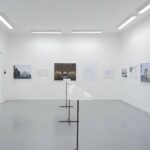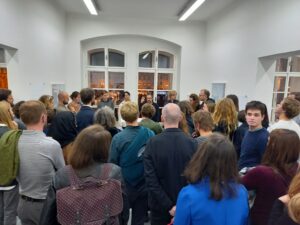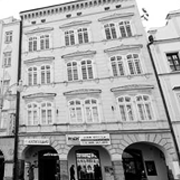Barozzi Veiga – On Continuity
| Date | – |
|---|---|
| Vernissage | 13.10.2022 18:00 |
| Curator | Michal Škoda |
The opening includes a talk by the architects
https://www.facebook.com/dumumenicb
For its penultimate exhibition of the year, the Gallery of Contemporary Art and Architecture – České Budějovice House of Art presents On Continuity by Barcelona architecture studio Barozzi Veiga.
The central theme of Veiga’s work is searching, meaning the search for an appropriate type of architecture and its conditions, limits, and boundaries within the context of the changes that are constantly happening as a result of developments in the architecture and in society.
Fabrizio Barozzi and Alberto Veiga founded Barozzi Veiga in Barcelona in 2004. Since then, they have worked internationally in the field of public and private projects and have received numerous prestigious awards, including the Ajac Young Catalan Architect Award (2007), the Barbara Cappochin International Architecture Award (2011), and most importantly the Gold Medal for Italian Architecture for the Best Debut Work (2012) for the Ribera del Duero Headquarters. The studio is also the recipient of the Young Talent of Italian Architecture Award (2013), the Design Vanguard Award (2014), the Fad International Award (2015), and the Life in Architecture Award (2015), and they were nominated for the Iakov Chernikhov International Prize (2008), Design of the Year (2015), the Fad Award (2018), and the International Swiss Architectural Award (2018). In 2015, their project for a philharmonic in Szczecin earned the prestigious Mies van der Rohe Award for European Architecture, and in 2018 their plans for a Museum of Art in Chur, Switzerland, was given the RIBA Award for International Excellence. The studio has also been active in the Czech Republic, where it recently took second place in the competition for the Vltava Philharmonic.
Barozzi Veiga was also invited to participated in the 2017 Chicago Architecture Biennial and the Venice Biennale in 2014, 2016, and 2021. Besides their current showing in České Budějovice, they have previously exhibited in Switzerland, Italy, the United States, and – last year – in South Korea and Tokyo, Japan.
Fabrizio Barozzi was born in 1976 and grew up in Rovereto, Italy. He studied architecture at Istituto Universitario di Architettura di Venezia, followed by studies at the Técnica Superior de Arquitectura in Seville and the École d’Architecture de Paris La Villette. He has taught at the International University of Catalonia in Barcelona (2007–2009) and the University of Girona (2009–2016), and was guest professors at his old school in Venice (2013–2015), at MIT in Cambridge, Massachusetts (2016–2018), and at Cornell University in Ithaca, New York (2020).
Alberto Veiga was born in 1973 and grew up in Santiago de Compostela, Spain. He studied at the Escuela Técnica Superior de Arquitectura de Navarra. Like Barozzi, he taught at the International University of Catalonia in Barcelona (2007–2010) and at the Istituto Universitario di Architettura di Venezia (2014). He was a guest professor at his alma mater in Navarra in 2021.
Barozzi Veiga can with some exaggeration be called a studio of nomads – not in terms of a constantly shifting office, but because of its range of activities: one characteristic of Barozzi and Veiga’s work is that they work all over the world, but not where they live. And they are fully aware of what such “activity” entails: the dangers springing from an unfamiliarity with a place and the need to come to terms with many different changes and ways of working. They nevertheless have shown that, with their designs and sets of values, they are capable of working with a particular locality and its various contexts and sensitively responding to and respecting the memory of the place in question. Their projects tend to be rooted in the place and are characterized by a strong emotional resonance and the ability to create an atmosphere.
Describing their work, the architects say: “Faced with an almost unlimited range of possibilities or uncertainties, in a world where everything is possible, where no shape has any meaning anymore, we think that not the purity of the project is important, but the purity of thought, the purity of the idea. It’s important to find a way of work that really means something. It shows the state in which our work as architects stands today, a profession which we face with persistence and without melancholy.”
Barozzi Veiga’s first monographic exhibition in the Czech Republic, On Continuity, presents a series of completed project or projects under construction. It highlights the central themes that characterize their work by using drawings, photographs, and models to narrate the conceptual aspects and constructional reality of each project.
Working in continuity with what already exists, the presence of the right tone that allows the project to become a part of the local context both in consolidated environments and ephemeral or natural landscapes, the search for a certain sense of permanence – these are the main questions that form the basis for the exhibited projects, all of which are infused with a desire to create civic and public architecture in which the architectural object becomes almost a simple frame for a central collective space.
“As is natural, our work has evolved over the last fifteen years, but what has notably remained unchanged is the fact that our projects, like novels, tend to start with an image, with the memory of a moment or some experienced feelings, with a fragment, with a detail of a wall, with light defining a place, or with the experience of material aging.
“The essential character of a place can often be found in certain unexpressed conditions – fragments, spaces, materials, atmospheres – which can be transformed, translated into the new architecture, to preserve and accentuate the identity of the original architecture and place.
“For us working in continuity means highlighting the uniqueness of a place, articulating an intimate relationship with the specifics of the site, so the new architecture resonates with a particular sense of belonging to the original conditions. It sometimes seems to us that this search has gravitated around a continuous, obsessive, and perhaps unconscious reworking of just a few of the processes, images, and lessons that marked our formative years, when we were fascinated by the process of analogy and by the way in which the simple reworking of found objects gave certain architectures the capacity to be on the border between belonging to a landscape and belonging to otherness. It seems we can still remember when, fascinated by Casa Malaparte, we discovered that a staircase could fly from one island to another and reveal a new horizon, always changing but always the same.”
In 2022, Verlag der Buchhandlung Walther und Franz König published a monograph on Barozzi Veiga, which is included in our exhibition.





